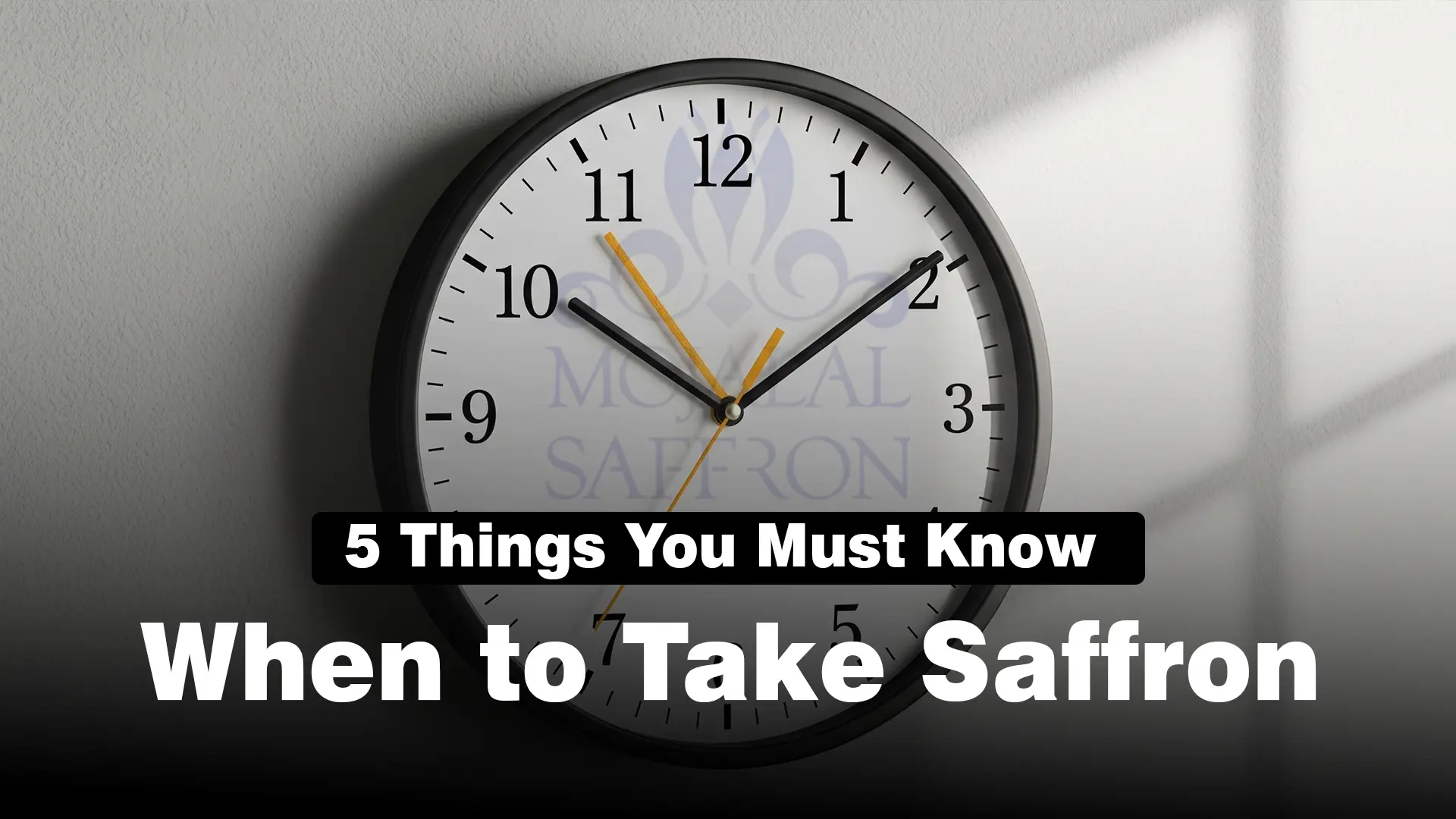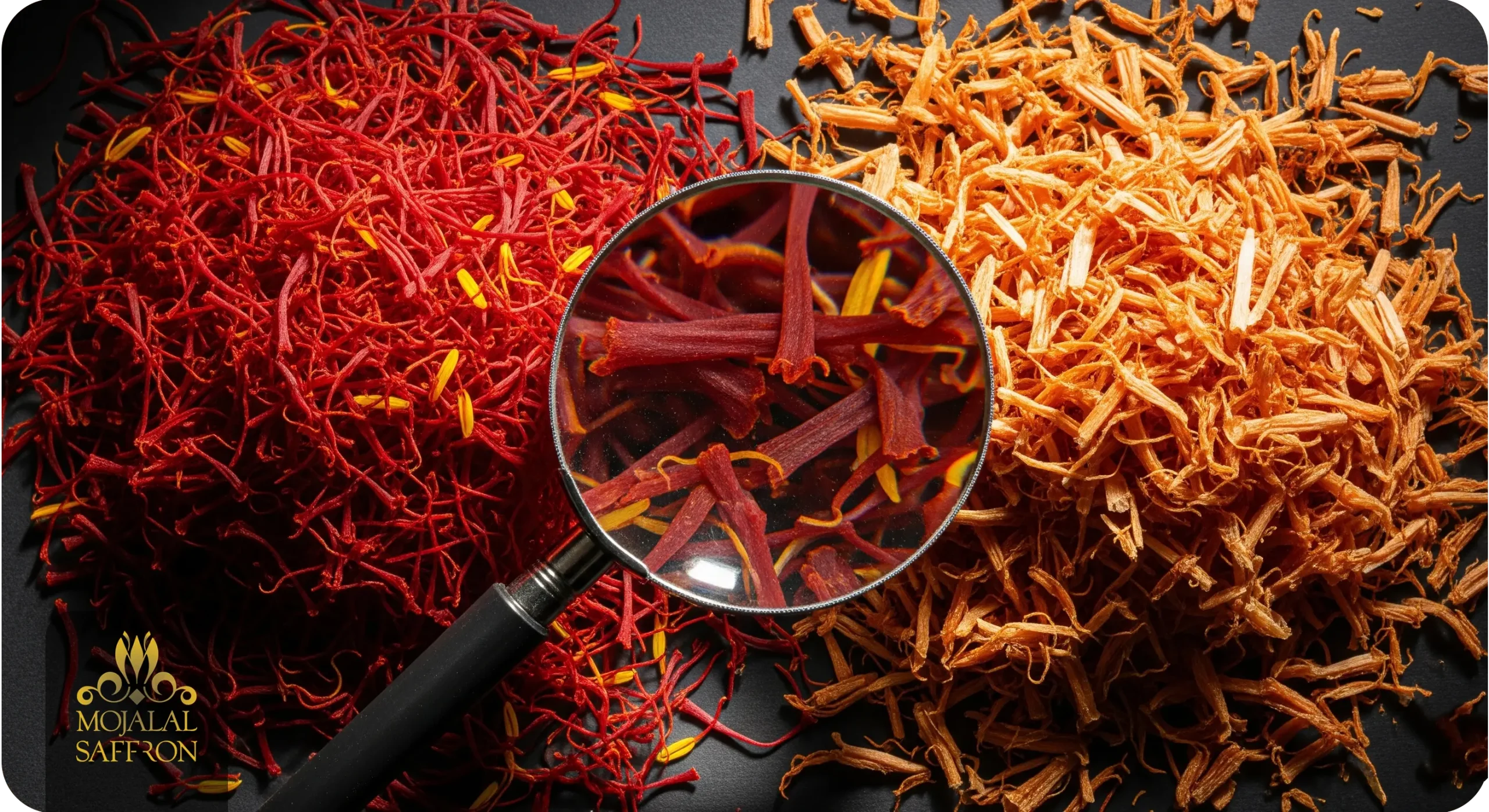Blog
When to Take Saffron : 5 Things You Must Know

When to Take Saffron : The Ultimate Guide to Timing, Dosage, and Benefits
Saffron, the legendary crimson spice, is having a major wellness moment. Hailed for everything from boosting mood to sharpening memory, it’s no wonder people are asking not just if they should take it, but how. The single most important question? When is the best time to take saffron?
Timing can be everything. Taking saffron in the morning might unlock a different set of benefits than taking it at night. The answer depends entirely on your health goals.
This definitive guide will walk you through exactly when and how to take saffron to maximize its potential. We’ll dive deep into the science-backed benefits, establish the critical line between a safe dose and a dangerous one, and outline who should steer clear of this potent spice. Consider this your complete manual for using saffron safely and effectively.
When to Take Saffron: A Strategic Guide for Morning, Noon, and Night
Unlike many supplements, there isn’t one single “best time” to take saffron. The ideal timing is tied directly to the outcome you’re looking for.
For Mood, Energy, and Focus: Take Saffron in the Morning
If your goal is to harness saffron’s celebrated mood-lifting and antidepressant properties, make it part of your morning routine. Studies suggest that its active compounds, crocin and safranal, can help regulate neurotransmitters like serotonin, promoting a sense of well-being and mental clarity throughout the day.
- How it works: Taking it in the morning allows the compounds to be absorbed and begin working as you start your day, potentially reducing anxiety and improving focus for the tasks ahead.
- Best for: Individuals seeking support for mild-to-moderate depression, daily stress, or a natural cognitive boost.
For Better Sleep and Relaxation: Take Saffron at Night
If you’re struggling with restless nights or looking for a way to unwind, taking saffron about an hour before bed could be your answer. Its calming properties can help soothe the nervous system, making it easier to fall asleep and improve overall sleep quality.
- How it works: Safranal, one of saffron’s key aromatic compounds, has mild sedative effects that promote relaxation without causing the grogginess associated with sleep aids.
- Best for: Those dealing with insomnia, anxiety-related sleep disturbances, or anyone looking to establish a more restful sleep cycle.
For Appetite Control and Weight Management: Take Saffron Before Meals
Looking to curb cravings and prevent overeating? Research indicates that taking saffron 30 minutes before your largest meals (like lunch or dinner) can be highly effective.
- How it works: Saffron appears to promote a feeling of satiety, or fullness, which can significantly reduce snacking and overall calorie intake.
- Best for: Individuals on a weight management journey or those who struggle with emotional or habitual snacking.
| Goal | Best Time to Take |
| Mood Enhancement & Focus | In the Morning |
| Improved Sleep & Relaxation | 1 Hour Before Bed |
| Appetite Control | 30 Minutes Before Meals |
The Science-Backed Benefits: What a Daily Dose Can Do for You
Now that we’ve covered the “when,” let’s explore the “why.” Regular, controlled consumption of saffron delivers a remarkable range of health benefits.
- A Natural Antidepressant: Numerous studies have shown a daily 30 mg dose of saffron can be as effective as conventional antidepressants like fluoxetine (Prozac) for mild-to-moderate depression, often with fewer side effects.
- Easing PMS Symptoms: Saffron is proven to significantly reduce the emotional and physical symptoms of PMS, including mood swings, irritability, and cramping.
- Sharpening Memory: Its powerful antioxidants protect brain cells from damage, which can improve cognitive function and may even play a role in slowing the progression of Alzheimer’s disease.
- Promoting Heart Health: Saffron’s anti-inflammatory properties help lower bad cholesterol (LDL) and blood pressure, supporting a healthy cardiovascular system.
- Protecting Vision: Clinical studies have found that saffron can improve vision in people with age-related macular degeneration (AMD), a leading cause of blindness in older adults.
The Golden Rule of Dosage: The Fine Line Between Remedy and Risk
This is the most critical part of using saffron safely. The right dose is effective; the wrong dose is dangerous.
- Therapeutic & Safe Dose: 30 mg per day. This is the gold standard used in clinical research and is all you need to see benefits. It’s equivalent to a small pinch of high-quality threads.
- Maximum Safe Dose: Up to 1.5 grams per day. While not toxic, this amount is unnecessary and increases the risk of mild side effects.
- Toxic Dose: Over 5 grams per day. This can cause severe poisoning, with symptoms like jaundice, nosebleeds, and severe gastrointestinal distress.
- Lethal Dose: 12 to 20 grams. Ingesting this much saffron can be fatal.
Key Takeaway: More is not better. Stick to the proven 30 mg daily dose for optimal safety and effectiveness.
Potential Risks: Who Should Be Cautious with Saffron
As powerful as it is, saffron isn’t for everyone. Reputable health resources like WebMD outline several potential side effects and contraindications.
Who Should Avoid Daily Saffron Use?
- Pregnant Women: Saffron can stimulate uterine contractions and poses a serious risk of miscarriage.
- Individuals with Bipolar Disorder: Its mood-altering effects can trigger mania or hypomania.
- People with Low Blood Pressure (Hypotension): Saffron can cause blood pressure to drop to unsafe levels.
- Individuals with Certain Allergies: Cross-reactivity is possible for those allergic to olive, ryegrass, or saltwort plants.
Read More : Using Saffron in Cooking
Important Drug Interactions
Always consult your doctor before taking saffron if you are on:
- Blood Pressure Medications
- Blood Thinners (e.g., Warfarin)
- Antidepressants (especially SSRIs)
- Diabetes Medications
A Buyer’s Guide: How to Spot Real Saffron from a Fake
Your saffron is only as good as its quality. Use these tips to avoid cheap imitations:
- Appearance: Real threads are trumpet-shaped and deep red.
- Aroma: It should smell complex—sweet and earthy, like honey and hay.
- Taste: It must taste slightly bitter, never sweet.
- The Cold Water Test: Real saffron slowly bleeds a golden-yellow color into cold water while the threads stay red. Fakes bleed red almost instantly.
Frequently Asked Questions (FAQ)
- Can I drink saffron tea every day?
Absolutely. One cup made with a small pinch of threads is a safe and effective way to consume your daily dose.
- How long can I take saffron continuously?
Most studies run for 6-12 weeks. For long-term use, consider “cycling”—taking it for three months, then taking a one-month break—and consult your doctor.
- Is daily saffron safe for children?
There is not enough research to recommend daily therapeutic doses for children. Limit their intake to small culinary amounts.
The Final Word
Timing your saffron intake based on your health goals is the key to unlocking its full potential. Whether you take it in the morning for mood, at night for sleep, or before meals for appetite control, sticking to the recommended 30 mg daily dose is crucial for safety.
Always remember: Before starting any new supplement, a conversation with your doctor is the smartest first step you can take.



